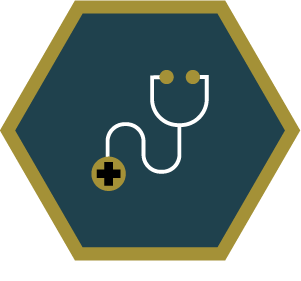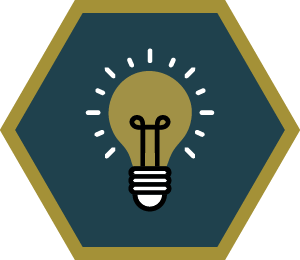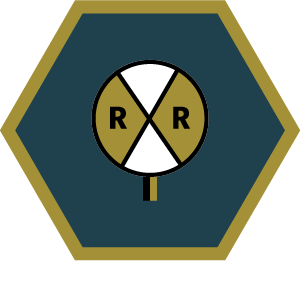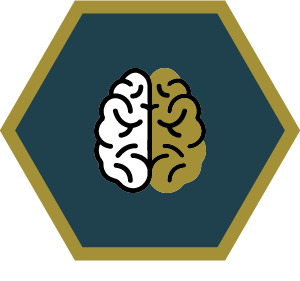Harnessing the power of artificial intelligence
USC researchers explore AI-based solutions to a wide range of challenges
Posted on: July 13, 2022; Updated on: May 10, 2023
On an early visit to the University of South Carolina, Amit Sheth was surprised when 10 deans showed up for a meeting with him about artificial intelligence.
Sheth — the incoming director of the university’s Artificial Intelligence Institute at the time — thought he would need to sell the deans on the idea. Instead, it was them pitching the importance of artificial intelligence to him.
“All of them were telling me why they are interested in AI, rather than me telling them why they should be interested in AI,” Sheth said in a 2020 interview with the university’s Breakthrough research magazine.
Since the university announced the institute in 2019, that interest has only grown. There are now dozens of researchers throughout campus exploring how artificial intelligence and machine learning can be used to advance fields from health care to education, manufacturing, disaster management and transportation.
Three things make South Carolina’s efforts stand out: (1) the collaborative nature of research here, (2) a commitment to harnessing the power of AI in an ethical way, respecting privacy protocols, and (3) the university’s commitment to prioritizing projects that will have a direct, real-world impact.
Much of the AI work being done is at the College of Engineering and Computing. But other colleges and schools are engaged, too. To date, the Artificial Intelligence Institute has also developed partnerships with the colleges of Nursing, Education, Arts and Sciences, Information and Communications, as well as the Schools of Public Health and Medicine, and other units, quickly making it a hub for interdisciplinary and translational research.
“We were set up from the beginning to be university-wide and to strongly collaborate with the rest of the university, and we’ve done exceptionally well,” Sheth says.
Here’s a look at some of the remarkable efforts of South Carolina researchers in the area of artificial intelligence.
Since the inception of the university’s Artificial Intelligence Institute, director Amit Sheth and the five new faculty he helped recruit have secured funding for a growing team of over 40 researchers, including nearly 30 Ph.D. students funded through research grants.
That external funding — $33 million so far — is crucial in powering research and in raising the institute’s appeal as a place for talented graduate students, post-docs and new faculty to focus exclusively on cutting-edge research for a fast-growing sector.
One key focus area is personalized health care.
According to Sheth, current AI prediction or recommendation is often seen by doctors and nurses as untrustworthy and unusable because the AI algorithm’s functioning isn’t explained and does not follow required clinician practice guidelines. By modifying deep learning with relevant domain and process knowledge, his team has developed explainable, safe and ultimately more trustworthy AI.
Sheth hopes to make AI more acceptable in critical applications like health care.
“By tying it with the knowledge that humans understand and create and manage, I'm
making this understandable,” says Sheth. “We take all the gobbledygook that statistical
learning and deep learning do, and we are making it explainable.”
Could artificial intelligence help the visually impaired? Pooyan Jamshidi hopes so. The assistant professor of computer science and engineering is working to develop assistive technology that would help the visually impaired interpret their surroundings.
Close your eyes and think about all the sights and sounds that surround you — your laptop, your desk, the whir of the air conditioner, the music coming from your co-worker’s radio; or, if you’re outside, the birds in a tree, the sound of a truck driving past, the murmur of conversation on the Horseshoe. Now, imagine these sights and sounds being described to you by a computerized voice in real time. In an instant, you become more independent because your surroundings, once shrouded in darkness, are illuminated by the power of technology.
The complexity of the project is enormous, but Jamshidi says the effort is worth it.
“I have always aspired to align my research toward ‘AI for social good,’ a research
that makes a difference for our society and hopefully makes a real impact beyond publications,”
Jamshidi says.
Jochen Lauterbach, chair of USC’s SmartState Center for Strategic Approaches to the Generation of Electricity, is among a vanguard of scientists worldwide who are focused on producing carbon-free energy from nitrogen, hydrogen and the recycling of carbon from CO2.
The goal is cool, but the execution is complex.
“To do the things we’re trying to do, you have to react molecules with each other that don't like to react with each other,” says Lauterbach, whose research is funded by the Department of Energy and the Department of Defense. “The catalyst is the matchmaker between the different molecules, enabling reactions that otherwise wouldn't happen.”
Lauterbach’s team designs novel catalysts at the atomic level. Experiments are expensive and time consuming, which means the research crew needs to have a good idea where to look for the proverbial needle in the haystack when they’re searching for the best combination of catalyst materials.
That’s where artificial intelligence comes in.
“We rely on AI-powered machine learning to create the optimal catalyst for a particular reaction,” Lauterbach says. “AI helps us to accelerate the search process, save time and money and think outside of the box,” Lauterbach says.
“And,” he adds, “because it involves machine learning, the AI system improves its knowledge over time and the predictions usually get better.”
Sitting at a railroad crossing is more than just inconvenient for drivers; it can be dangerous if a first-responder vehicle is stuck in train traffic on its way to an emergency. Yu Qian, a civil engineering professor, is using artificial intelligence to try to build safer transportation systems
“We surveyed responders to identify several locations where the problem most often occurs in the Columbia area,” Qian says. “Then we developed a system that uses computer vision to monitor street traffic conditions and got operational information from the railroads to better estimate train crossing times and potential delays.”
Those estimates can help 911 dispatchers choose better routes for vehicles responding
to an emergency call. He’s also working to improve safety at railway crossings and
along tracks, using computer vision and drones to develop an autonomous track inspection
system.
Prior to coming to the University of South Carolina, Christian O’Reilly worked in Switzerland on the internationally renowned Blue Brain Project. He has also completed research in identifying brain differences between neurotypical people and individuals diagnosed with autism spectrum disorder.
Today, he’s continuing his work in neuroscience and autism at South Carolina.
In 2021, O’Reilly joined the university as an assistant professor in neuroscience and artificial intelligence at the College of Engineering and Computing. In this role, he works with both the Artificial Intelligence Institute and the Autism and Neurodevelopmental Disorders Center of Excellence.
“I have always been interested in AI and neural networks, but as I matured through my studies, I knew I wanted to focus more on biomedical applications because I wanted to have a direct impact on people’s lives,” O’Reilly says.
At USC, he’s found a welcoming environment in which to do work that spans several academic fields.
“I’m collaborating with many faculty in different departments, and I didn’t have to struggle to get these connections,” he says. “And it’s not like that everywhere, so it’s something I really appreciate.”
What if you sent a probe to Mars but no one could interpret the data that its sensors were sending back? How can you protect a structure against a threat that it has never encountered? These are the types of challenges that Sourav Banerjee thrives on.
Banerjee is an expert in nondestructive evaluation and structural health monitoring in the fields of aerospace and civil and mechanical engineering. And the answer to both questions is: Build a digital twin, a virtual representation of an object or system that uses simulation, machine learning and reasoning. That twin lets researchers test a full range of scenarios in order to improve the performance of real-world objects and systems. Banerjee works with NASA and the U.S. Navy on technology that employs digital twins and artificial intelligence, and he’s long championed the benefits of digital twins.
“I’m very excited because I’ve been working in this area for quite some time and some
of the ideas and concepts I’m developing have been accepted by some agencies,” Banerjee
says. “Digital twins are almost everywhere, and our philosophy and concept were developed
as a long-term program.”





